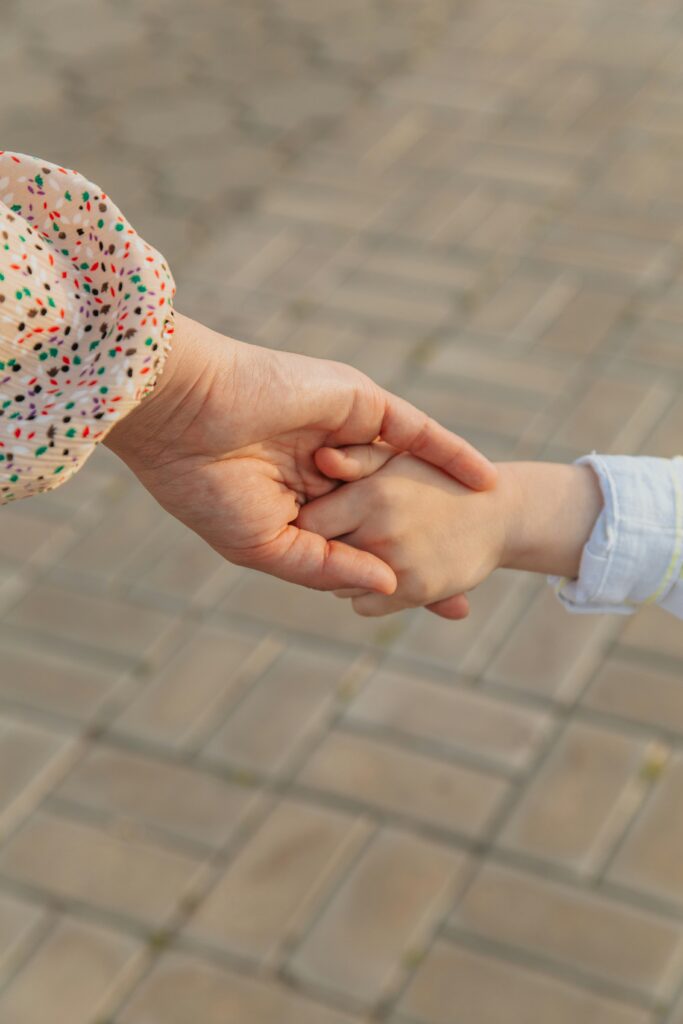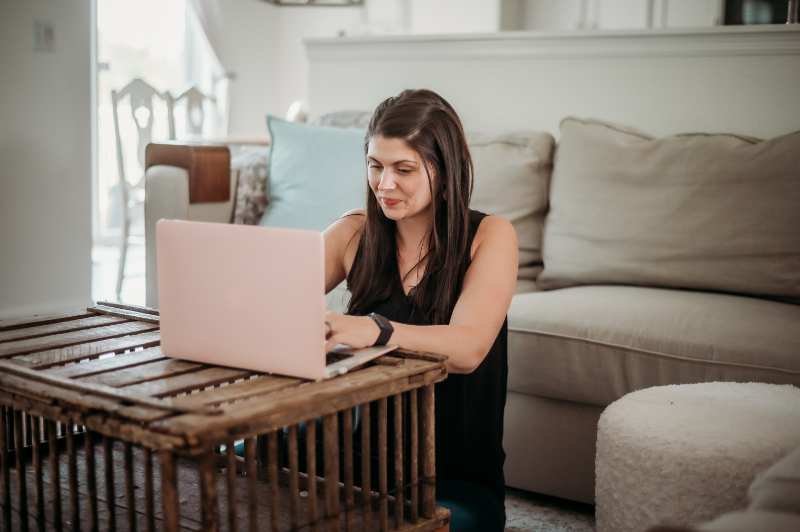I used to think I had to be a perfectly calm parent to help my child manage their big feelings. But the truth is, emotional regulation isn’t about never losing your cool. It’s about noticing what’s happening in your body and mind—and learning how to come back to center (especially when everything feels chaotic).
If you’ve ever snapped at your child and then felt horrible afterward, or if you freeze when they have a meltdown because you’re overwhelmed yourself—you’re not alone. I’ve been there, and so have many of the parents I work with. Learning how to regulate your emotions isn’t just helpful—it’s essential for supporting your child through theirs.

What Emotional Regulation Actually Means
Let’s clear something up: regulating your emotions doesn’t mean suppressing them.
It means noticing what you’re feeling, understanding where it’s coming from, and responding in a way that aligns with your values—not just reacting from stress or fear. Emotional regulation is the ability to ride the wave of a feeling without getting pulled under.
And if you live with anxiety or OCD (like I do), those waves can come fast and strong. But the more you practice regulation, the more equipped you feel to show up for your child—especially when they are riding their own emotional storms.
Signs You Might Be Struggling with Emotional Regulation
Many of us weren’t taught how to regulate emotions growing up. So if it doesn’t come naturally to you, that’s not a flaw—it’s just a skill you haven’t fully learned yet.
Here are some signs that emotional regulation might be a challenge right now:
- You feel overwhelmed by your child’s emotions (like their anxiety or anger triggers your own panic or rage)
- You often “numb out” or shut down when things get stressful
- You feel guilty or ashamed after reacting in ways you didn’t intend
- You’re constantly tense or on edge—even during calmer moments
- You try to “fix” your child’s feelings immediately instead of allowing space for them
(I’ve done every single one of these. No judgment here—just awareness. Awareness is the first step toward change.)
Why Your Nervous System Matters in Parenting
Your nervous system plays a huge role in how you regulate your emotions. When it’s dysregulated—whether because of stress, trauma, anxiety, or simply not enough rest—it becomes harder to stay grounded when your child is struggling.
When your nervous system is calm, you have more access to empathy, patience, and creative problem-solving. When it’s not, everything feels like a threat—even your child’s tantrum about the blue cup instead of the red one.
This is why I always tell parents: your regulation is your child’s co-regulation. The way you respond teaches them what to do with their own feelings.
(And yes, it’s okay if you mess it up sometimes. Repair is part of the work, too.)

Strategies to Regulate Your Own Emotions
Here’s the good news—you don’t need hours of free time or a full spa day to support your emotional regulation. Small, doable practices go a long way. These are some of the tools I use myself and teach my clients:
1. Learn your early signs of dysregulation
Do your shoulders tense up? Does your chest get tight? Do you start rushing or snapping? These are clues that your system is getting overwhelmed. The sooner you catch them, the sooner you can take action.
2. Use grounding techniques in real time
When you notice yourself getting dysregulated, pause. Try box breathing (inhale for 4, hold for 4, exhale for 4, hold for 4). Step outside for a few deep breaths. Even placing your hand on your chest and saying “I’m safe right now” can help settle your nervous system.
I keep my Break Free Action Cards nearby for moments like these. They’re affirmation cards small enough to stash in a drawer or bag, but powerful when your brain is spiraling. Each one has a grounding prompt or challenge that helps you re-center fast.
3. Stop trying to be calm—try to be connected instead
Your child doesn’t need you to be perfectly regulated all the time. They need to feel connected to you. When you say, “I’m feeling overwhelmed too, let’s take a break together,” you’re modeling emotional honesty and self-awareness.
That teaches more than staying perfectly composed ever could.
4. Give yourself permission to step away
If things are escalating and you feel like you’re about to lose it, it’s okay to step out of the room. Breathe. Splash cold water on your face. Come back when you feel more present.
This isn’t abandoning your child—it’s protecting both of you.
5. Get the support you deserve
If regulating your emotions feels nearly impossible (especially if OCD, anxiety, or past trauma is part of the picture), you’re not broken. You just need the right tools and support.
This is exactly why I created the OCD and Anxiety Recovery Blueprint—to help people like you learn how to manage big emotions, rewire anxious patterns, and respond from a place of clarity and calm.
How to Teach Your Child Emotional Regulation
Once you’re working on your own regulation, you can guide your child through theirs. (Notice I said guide, not control—emotions aren’t problems to fix, but signals to understand.)
1. Name feelings out loud
Even if your child is nonverbal or very young, narrating emotions helps them build emotional vocabulary. Try: “You’re feeling mad because we had to leave the park. That’s really hard.”
2. Model regulation strategies
Let them see you take deep breaths. Let them hear you say, “I’m going to sit quietly for a minute to calm down.” Kids learn through what we do, not just what we say.
We use the Break Free Stickers at home too. They are more than just something fun to slap on a water bottle—they’re daily reminders of what you’re building. One of my favorites says “Create Defiant Peace.” And, that’s exactly what this work is about.
3. Use calming tools together
Create a little regulation kit with your child. It could include soft items, sensory toys, coloring pages, or even a calming scent. (The Break Free Air Fresheners double as affirmations, which can be grounding for both of you in tough moments.)
4. Focus on connection before correction
When your child is dysregulated, they’re not ready to learn or follow instructions. Your job in that moment is to help them feel safe—not to lecture or redirect.
When the storm passes, then you can talk about what happened and what to do next time.

Your Calm Is Contagious
Learning how to regulate your emotions isn’t just for your sake—it’s one of the greatest gifts you can give your child. Not because you’ll do it perfectly, but because you’re showing them what it looks like to feel things fully and respond with intention.
This is the heart of healing. It’s also the heart of parenting with purpose.
If you’re ready for more tools to help you stay grounded—even when OCD and anxiety try to hijack your day—my OCD and Anxiety Recovery Blueprint is here to guide you. It’s full of strategies you can actually use (no fluff, just real support). Don’t forget to follow along on my podcast All The Hard Things for daily inspiration and support.
And if you want reminders that fit in your pocket, your car, or your fridge—check out my Break Free collection. These small but mighty tools were made to support you on the hard days and help you stay grounded when it matters most.
You’ve got this. One breath, one moment, one choice at a time.
most popular episodes
Love my podcast?
Episode 112: Postpartum OCD and False Memory OCD
Imagine how in depth I can go in an online course. Instantly downloadable and game-changing. Take the next step towards an amazing life.